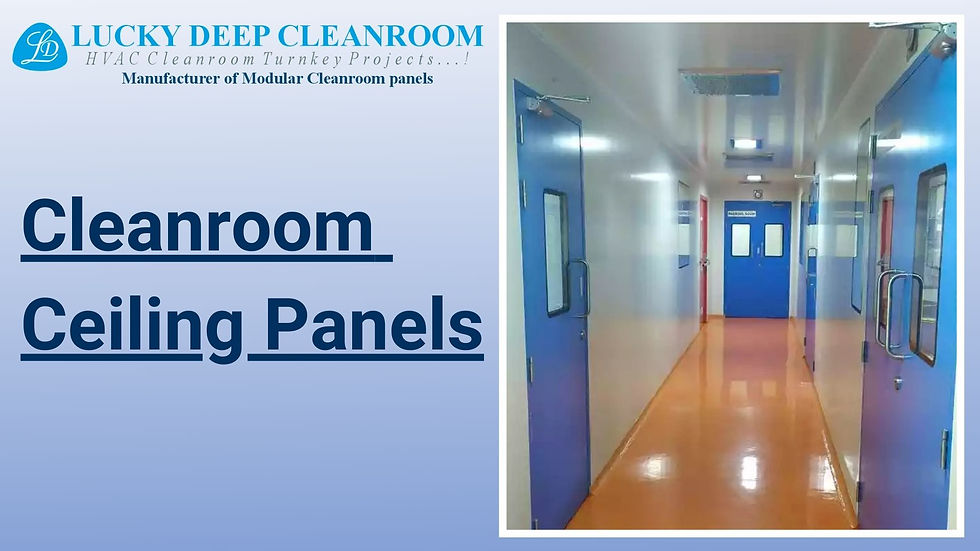Clean Room Wall Panels: A Comprehensive Guide
- Lucky Deep
- Jan 21
- 2 min read

Materials and Composition
Clean room wall panels are crafted with meticulous attention to detail, ensuring their compatibility with high-performance applications across industries such as pharmaceuticals, electronics, and healthcare. These panels are available in various skin options:
PCGI / PCGI (GPSP): Powder-coated galvanized iron.
PPGI / PPGI: Pre-painted galvanized iron.
SS / SS: Stainless steel, known for its exceptional durability and resistance to corrosion.
These materials can be combined in any two configurations to suit specific clean room requirements.
Structural Framework
The structural framework of the panels is constructed using galvanized iron (GI), offering excellent support and rigidity.
Thickness Specifications
Sheet Thickness: Available in 0.5 mm, 0.6 mm, and 0.8 mm to provide options for varying strength and insulation needs.
Powder Coating Thickness: 60-80 microns for robust surface protection and aesthetic appeal.
Pre-Coating Thickness: 30-35 microns to ensure superior adhesion and durability.
Insulation Options
Efficient insulation is a key feature of clean room wall panels, with multiple options available based on density and thermal performance:
PUF (Polyurethane Foam): Density of 40±2 kg/m³ for lightweight yet effective insulation.
PIR (Polyisocyanurate Foam): Density of 48±2 kg/m³ for enhanced fire resistance.
Rockwool: Offered in densities of 96 kg/m³ and 144 kg/m³ for excellent sound and thermal insulation properties.
Sealants and Gaps
To maintain airtightness and hygiene, food-grade silicone sealant is applied to both sides of the panels. The maximum permissible gap between panels is 4 mm, ensuring an uninterrupted seal.
Dimensions and Thickness
Clean room wall panels are tailored to meet specific layout requirements:
Width: Standard width of 1200 mm, or customized as per room layout.
Height: Determined by the layout to ensure a seamless fit.
Panel Thickness: Options include 35 mm, 50 mm, 80 mm, and 100 mm, catering to diverse structural and insulation needs.
Support Structure
The panels are supported by powder-coated base runners and feature self-supporting interconnecting profiles. This design ensures stability and ease of assembly.
Color Options
The standard color for clean room panels is RAL 9002, a neutral and clean shade. However, panels can be customized with any color from the RAL chart to match aesthetic preferences or specific requirements.
Panel Types
Clean room panels are available in two configurations:
Progressive Panels: Designed for ease of installation and adaptability during assembly.
Non-Progressive Panels: Provide a fixed and rigid structure.
Applications
These panels are widely used in environments where hygiene, insulation, and structural integrity are critical. Industries such as pharmaceuticals, biotechnology, electronics, and food processing benefit significantly from their use.
By integrating advanced materials, precision engineering, and customizable options, clean room wall panels ensure optimal performance in controlled environments. Their versatility and durability make them a cornerstone of modern clean room design




Comments